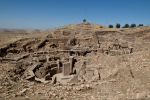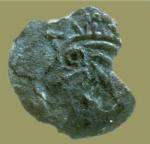OOParts – Curiosities That Can’t Be Ignored?
My writing, especially in paranormal and alternate history, takes me to some very interesting places. Lately, I’ve been spending a good amount of time studying up on OOParts (Out Of Place Artifacts), which is a term applied to prehistoric objects found throughout the world that defy their level of technology, and are at odds with their age based on physical, geological, or chemical evidence.
“They are often frustrating to conventional scientists and a delight to adventurous investigators and individuals interested in alternative scientific theories.”
There are many within scientific mainstream who dismiss OOParts in general, claiming their history can be explained, their creation is not out of place to the historical period in which they’re aligned, and that the people who built or constructed them were entirely capable of doing so. In short, it’s Occam’s Razor at work: the simplest answer or explanation is often the correct one.
And yet there are others who challenge these explanations, claiming there is more to Earth and our history than we want to admit. Because, according to them, to admit the truth means we have to admit that we are wrong in some of our historical interpretations and that there is, or was, something else at work as humans progressed into the advanced civilization we know today.
In other words, how could ancient man, with simple tools and a supposedly less-educated mind, create or build some of the amazing artifacts and historical sites we’ve discovered? Whatever your thoughts on the matter, I’m intrigued by all possibilities and that’s what prompts me to write the paranormal, alternate history fiction I have a passion for.
Here are some OOParts that might make you go hmm:

copyright: Wikipedia
Acámbaro Figures. In 1944, a guy named Waldemar Julsrud found a clay figure near the banks of Cerro del Toro in Acámbaro, Guanjato, Mexico. When he started discovering more of them, he hired a team who went on to uncover 32,000 figurines depicting dinosaurs, unknown animals, an extinct species of rhinoceros, a horse that hasn’t been around since the Ice Age, and other unidentified species no one has seen before. Others show human figures hunting. Carbon dating placed the artifacts at 5,000 years old, that are similar to stones found in Peru. Some argue that some pieces are incomplete and that they haven’t been able to replicate carbon-dating results. But if they are a fraud, why carve 32,000 pieces? That’s a heck of a lot of work for the hype.

copyright: Wikipedia
Göbekli Tepe. This is an archaeological site in Turkey that dates to the 10th millennium BCE, which clocks in at 14,000-15,000 years ago when hunter-gatherers roamed the land. The area is made up of ring-shaped pits and monoliths that stand at 16 feet tall, and was most likely a temple. But here’s the thing: each of the pillars weighs from seven to ten tons each, and those hunter-gatherers hadn’t figured out how to make pottery or tools made of metal yet. So how did they get them into place, and so perfectly?

Credit: http://www.mnh.si.edu
The Goddard Coin. A Norse coin found in a Native American Settlement, stamped between 1065 and 1080 during the reign of King Olaf III. How did an ancient Norse artifact end up on Native American soil during that time period? And why was it the only one? Did the Vikings really travel further south than we believed they did? And, if so, why is it the only Norse artifact found there? Was it planted? Or is there another story at work we don’t know about, and maybe never will?

copyright UNESCO
Nazca Lines. A series of ancient geoglyphs in the Nazca Desert, Peru. Created between 500BC and 500AD, they depict figures of monkeys, fish, birds, spiders, trees, flowers, and many other shapes. The largest measures in at 660 feet. At first, it was believed these Lines could only be seen from flying overhead, but others claim that they can be viewed from adjacent hills. And even if that’s the case, why were they designed in the first place?
There is no arguing that there are anomalies or mysteries at work here, much as there are in interpreting how the Ancient Egyptians built the pyramids with such mathematical or astronomical precision, or how Stonehenge was constructed, along with so many other artifacts and sites that intrigue the imagination. But if there’s one lesson I’ve learned in my continuing research, it’s that man wasn’t as uneducated as we sometimes like to think they were. I truly believe they had skills and smarts we still are only learning about. But unless someone can go back in time, or someone can come forward in time, we’ll never have all the answers.
Until then, I’ll continue to create my own theories and explanations in my own stories. :)
___________________________________________________
Copyright © 2012-2015 · All Rights Reserved · TerriPonce.com
Filed under: Stories Behind The Stories Tagged: Acambaro Figures, archaeology, artifacts, book research, Gobekli Tepe, Goddard Coin, Great Pyramid, Nazca Lines, OOParts, stonehenge, writing research











